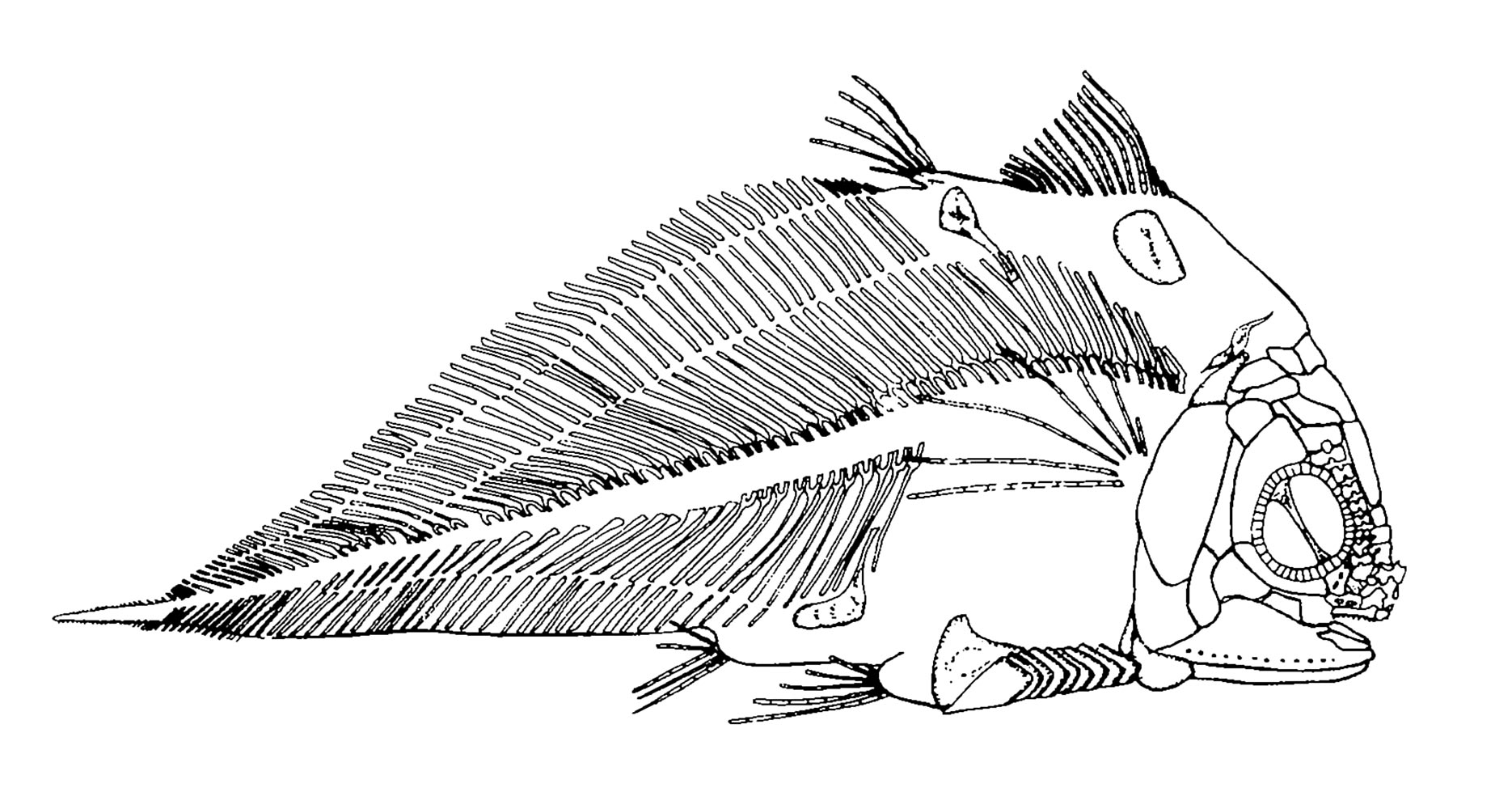Description
Allenypterus montanus
Late Mississippian
Bear Gulch Limestone
Fergus County, Montana, USA
153mm coelacanth on 170mm slab. Extremely rare. First one we have had in 40 years.
Allenypterus is an extinct genus of coelacanth fish from the Late Carboniferous period, approximately 300 million years ago. It belongs to the class Sarcopterygii, which includes both extinct species and modern-day relatives like lungfish. Allenypterus is notable for providing insight into the diversity of lobe-finned fish during this time in Earth’s history.
The Sarcopterygii are significant because they include ancestors of tetrapods (four-limbed vertebrates, including amphibians, reptiles, birds, and mammals). Unlike ray-finned fish, lobe-finned fish have fleshy, lobed, paired fins, which are thought to be precursors to limbs in land vertebrates. Like other sarcopterygians, Allenypterus would have had sturdy, muscular fins supported by bones, allowing more robust movement compared to typical finned fish.
Fossils of Allenypterus have been found in the Bear Gulch Limestone of Montana, which is a famous fossil site from the Carboniferous period and is among the rarest of all fishes found there. The Bear Gulch site is known for preserving a wide variety of marine life in remarkable detail. The preservation of Allenypterus fossils in Bear Gulch is so detailed that it provides paleontologists with important information about its anatomy, including features like skull structure, fin arrangement and even diet.









